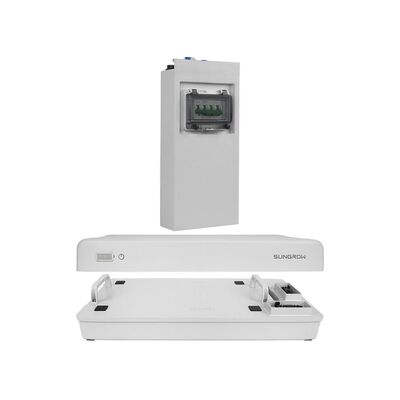Kingsgrove Branch:
What Size Solar Battery Do I Need

So, you’ve got solar panels, or you’re about to take the plunge. Good on ya! You’re on the path to cheaper, cleaner energy. But to truly master your power bill and keep the lights on even when the grid goes down, you're probably wondering, "What size solar battery do I need?"
Choosing the right size is crucial. Go too small, and you'll still be pulling from the grid every night. Go too big, and you could be overpaying for storage you'll never use. Let's break down how to find that "just right" size for your Aussie home.
It All Starts with Your Energy Bill
The single most important tool in sizing your battery is your electricity bill. Forget guesswork and fancy calculators for a moment and go straight to the source.
Look for a section that shows your ‘Average Daily Usage’ in kilowatt-hours (kWh). This number is the foundation of your calculation. If your bill shows a monthly or quarterly total, just divide it by the number of days in the billing period (e.g., 90 days for a quarter) to find your daily average.
The average Aussie household uses somewhere between 15 and 25 kWh per day, but this can vary wildly depending on your appliances, family size, and whether you have a pool or an electric vehicle. Your own bill is your ground truth.
The Big Question: When Do You Use Your Power?
Once you know how much power you use, the next step is to figure out when you use it. A solar battery’s main job is to cover your usage when your panels aren’t producing energy—primarily overnight and on overcast days.
As a general rule of thumb, many households use about 30-40% of their energy during the day (when solar is active) and the remaining 60-70% in the evening and overnight.
Let's do some simple maths:
- Your Average Daily Usage: Let's say it's 20 kWh.
- Estimated Overnight Usage: 65% of 20 kWh = 13 kWh.
In this scenario, a battery with a usable capacity of around 13 kWh would be a fantastic goal to cover most, if not all, of your overnight electricity needs.
Key Factors to Consider
- Your Solar System Size: Your battery can only store what your panels produce. You need a solar system large enough to charge the battery while also powering your home during the day. A common guideline is to have a battery with a capacity (kWh) that is roughly double the size of your solar system (kW). For a 6.6kW solar system, a battery around 10-13.5kWh is often a perfect match.
- Your Goal: What do you want your battery to do?
- Maximise Self-Consumption: If your goal is to use as much of your own solar power as possible and slash your bills, sizing the battery to cover your average overnight usage is ideal.
- Blackout Protection: If your main concern is keeping essentials running during a power outage, you might prioritise a battery with a higher power output (kW) to handle appliances starting up. You may not need a massive capacity, just enough to get you through a few hours.
- Future-Proofing: Are you planning on buying an electric vehicle in the next few years? Thinking of installing a pool or a spa? These will significantly increase your energy consumption. It’s wise to factor this future usage into your calculations. Many modern batteries, like the Sungrow SBR series, are modular, allowing you to add more capacity later on, which is a brilliant, flexible option.
Sourcing the Right Gear from Schnap
Once you've got an idea of the size you need, the next step is sourcing a quality system. For trade professionals and those working with a licensed installer, having a reliable supplier for all the components is essential.
This is where a specialist like Schnap.com.au comes into the picture. As an Australian-based supplier of electrical and solar solutions, they provide access to the top-tier brands that offer the very products you'll need. On their website, you can find components for complete solar energy systems from industry leaders like Sungrow and Enphase.
While you'll need a qualified installer to put it all together, Schnap is the go-to source for the hardware. They stock the brands that are known for offering a range of battery sizes and modular options, making it easier to tailor a system to your specific needs. Whether you've calculated you need a 9.6kWh modular unit or a larger 13.5kWh powerhouse, you can source the components from a supplier that understands the Aussie market.
In short, sizing your solar battery isn't a dark art. It’s about understanding your own energy habits. Grab your power bill, think about your goals, and you'll be well-equipped to make a smart investment in your home's energy future.
Recent posts

Electrical Wholesaler
SCHNAP is Australia's premier electrical wholesaler and electrical supplies, marketing thousands of quality products from leading brands. Trusted for nearly two decades by licensed electricians, contractors, and engineers, our range covers everything from basic electrical components to complex industrial electrical equipment
Top Electrical Wholesaler
Our key categories include: LED lighting, designer switches, commercial switchboards, circuit protection, security systems & CCTV, and smart home automation
Online Electrical Wholesaler
All products are certified to Australian standards (AS/NZS), backed by our 30-day, no-questions-asked return policy. Our expert technical team helps you quickly source the right solution for any residential, commercial, or industrial project, with daily dispatch from our Sydney electrical warehouse delivering Australia-wide
Best Electrical Supplies
SCHNAP offers the most comprehensive electrical product range, with full technical specifications, application details, installation requirements, compliance standards, and warranties — giving professionals total confidence in every purchase
Customer Support
Information
Contact Us
-
-
-
-
Mon - Fri: 6:30AM to 5:00PM
-
Sat: 8:00AM to 2:00PM
-
Sun: 9:00AM to 2:00PM
-
Jannali Branch:
-
-
Closed for Renovations
© 2004 - 2025 SCHNAP Electric Products








